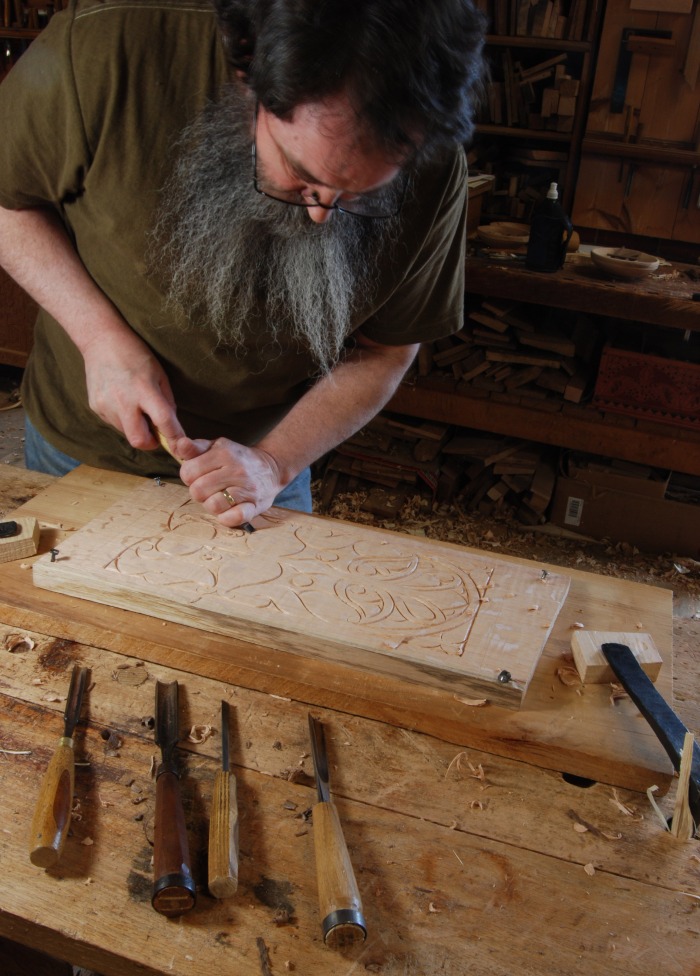I’ve been slightly under the proverbial weather lately, so not in the shop much, and not organized enough to shoot anything when I am there. I went last week to the Lie Nielsen event in Manchester, CT at the Connecticut Valley School of Woodworking. While I was there, I spent some time showing visitors some photos of tool marks on seventeenth-century furniture. I dug up a few of the photos here. Maybe we’ve seen some of these before, but often these things bear reviewing.

Scribing the location for mortises across the face of your stock? Why would a joiner mark his mortise here? I think it’s to lay out the two matching rails together. Mark one, then butt them edge-to-edge, and scribe the marks across the faces of both to ensure that the mortises in both rails agree.

These two examples are from joined chests from Dedham, Massachusetts, circa 1635-1680. In some cases, this shop marked them across the outside face, sometimes even marked them on both outside and inside faces, i.e. scribed them all around the stock. Note that the one showing the upper rail-to-stile joint marks the upper end of the mortise below the end of the stile. The corresponding tenon will be stepped as well. This way the joint is not exposed at the upper end of the stile/upper edge of the rail.

Same shop – the scribed layout for two half-circles that define the S-scrolls. Also we can see a line struck with a square and awl across the panel to get both centerpoints at the same height. Often you can also see a scribed line along the panel’s edge, to align the bottom set of half-circles with those at the top. (or vice versa)

Here’s a favorite, a “carpenters” joint ID mark, on the inside face of a muntin on a joined chest front, Braintree, Massachusetts, c. 1640-1670. I’ll see if I have the other two muntins from this chest – they help show the scheme of this numbering system. It amounts to a sort of Roman numeral identification.

The inside of a chest of drawers from Boston, c. 1635-1680s showing the awl layout for the edges of the mortises; also here some riving marks, hewing marks from the joiner’s hatchet. Most notable is the timber – not oak, but Spanish cedar, or cedrela. About as light as oak is heavy. Some Spanish cedar is ring porous, so rives well like oak. Some is diffuous porous, with interlocked grain, like its cousin, mahogany.

Here’s the inside face of the apron of a joined square table, late 17th-c; NewburyMassachusetts. Riving marks, foreplane shaping, hatchet work. No smooth plane work at all.

Pitsaw marks on the underside of the wainscot chair thought to have belonged to Edward Winslow of Plymouth. If it’s really Winslow’s, it’s quite early. I think he booked back to England by the mid-1640s. Pitsawn evidence on furniture from New England is quite rare. Even without the saw marks; the grain orientation and the knot indicate “not riven” stock. but in this case, not mill-sawn either.
that’s enough for now. hope you like them.





























